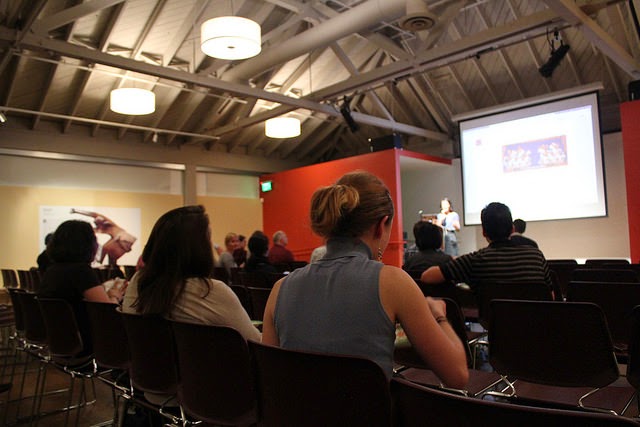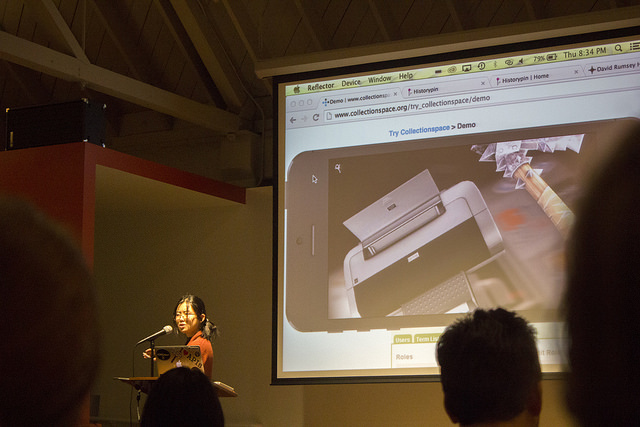On September 18th, Digital Humanities @ Berkeley hosted the Bay Area Digital Humanities Meetup at the Magnes Collection for Jewish Art and Life. Started earlier this year, the Bay Area DH Meetup seeks to foster ties between industry, the academy, and the public to promote DH scholarship.
The Month of Museums and Collections
September has been a fruitful month for reflecting on digital collections. Setting the tone for the month, HackTheHearst, a 10-day hackathon for the Phoebe A. Hearst Museum of Anthropology ran from the 10th to the 18th. Participants were invited to “hack” the museum collections and build tools to explore and expose the collections to K-12 users, California heritage communities, and researchers.
Research IT invited a variety of campus employees from IT, libraries, and archives to our bi-monthly reading group to discuss Digital Asset Management systems (DAMS). DAMS form the infrastructure by which digital collections are gathered, accessed by researchers, and, in the case of large-scale projects like the California Digital Library and the Digital Public Library of America, aggregated.
At Michael Buckland and Clifford Lynch’s Information Access Seminar, the past and future role of museums was up for discussion. George Oates, designer of the Flickr interface and the Internet Archive’s Open Library, shared notes from her work with design for cultural heritage. She pointed to the Rijksmuseum as a standout example of open and remixable digital collections.
DH + Digital Collections
In keeping with the themes of HackTheHearst, we gathered the digital humanities community to discuss digital collections, both large and small, and the tools that support them.

Credit: Quinn Dombrowski
Deborah Anderson of UC Berkeley’s Linguistics Department shared her work with the Script Encoding Initiative. SEIworks to create proposals for minority and historic scripts to be included in the Unicode standard, which specifies how characters are read and written electronically. In making digital collections available to both cultural minority communities and researchers hoping to perform analysis with digital tools, encoding these scripts is a pressing need.
Quinn Dombrowski, Digital Humanities Coordinator at Research IT, discussed using Drupal, an open source content management system (CMS) to create highly customized research environments. For digital humanities projects with limited funding and lacking extensive IT support, Drupal offers a robust platform. Quinn will be teaching 3-part “Drupal for Researchers” courses at the Social Sciences Data Lab this month (Wednesdays, beginning 10/1 and Thursdays, beginning 10/9).
John Lowe of Research IT, a HackTheHearst technical mentor, shared the history of CollectionSpace, an open-source collections management system used by diverse set of campus collections, such as the Hearst Museum, the Jepson Herbaria, and the Berkeley Art Museum / Pacific Film Archive. John also presented two apps he created for exposing the extensive metadata and images associated with the Hearst’s collections.
Jon Voss of We Are What We Do discussed HistoryPin, a global non-profit project that aims to strengthen community through local history. Partnering with large institutional collections (such as the Bancroft Library), smaller museums, local library collections, and individual contributors, HistoryPin allows users to explore history through exploring photos “pinned” maps of their local area.
an example from one of HistoryPin’s most recent projects, Year of the Bay
Yosun Chang, a participant in HackTheHearst, came forward to present a lightning talk on potential applications of augmented reality in museums. Yosun demonstrated how objects could be easily digitized by using approximately 20 photos taken from various angles. Museum visitors could then closely examine the created 3D model with their smartphones.
